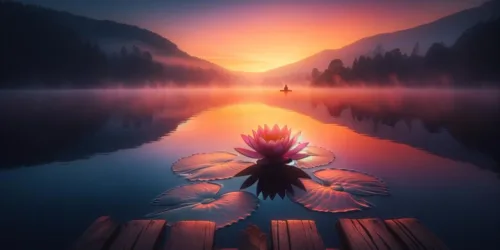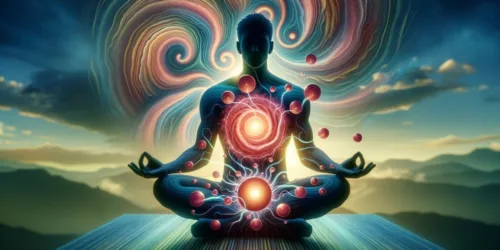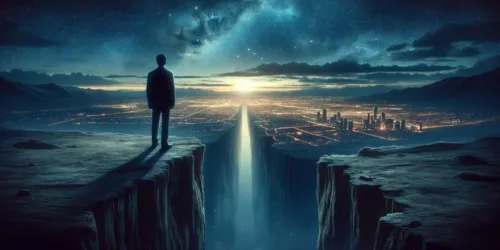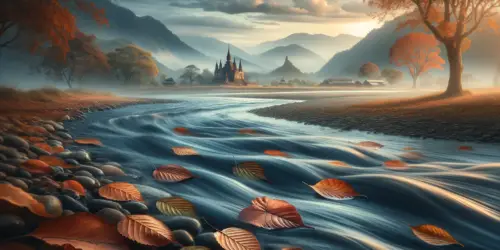The Powerful Connection Between Depression and Art
You've surely walked through an art gallery where the artworks seemed to whisper secrets of a thousand sorrows, each canvas holding a universe of emotion. This silent symphony is the nexus where depression and art collide in a tempest of color and form.
As you navigate through the complexities of this connection, you'll uncover not only the ways in which artists have historically channeled their despair into their work but also how these visual manifestations serve as a bridge to our own understanding of mental health. The strokes of a brush or the chisel of a sculptor may articulate what words cannot, providing a profound insight into the human psyche.
In the unfolding chapters of this narrative, you're invited to consider how the beauty birthed from such darkness can illuminate the shadows of the mind, offering solace and, perhaps, a glimpse into the healing power of art itself.
Key Takeaways
- Art provides a non-verbal platform for individuals to express and make sense of the overwhelming emotions caused by depression.
- Engaging in creative arts can be a cathartic experience, offering relief and empowerment for those struggling with depression.
- Artists often use dark colors, metaphors, distorted images, and juxtapositions to symbolize and convey the internal turmoil and battle of emotions experienced during depression.
- Art can portray moments of hope, resilience, growth, and healing amidst the darkness of depression.
Emotional Expression Through Art
Through art, you can channel deep-seated feelings, offering a visual language for emotions that might otherwise remain trapped within you. The canvas becomes a confidante, a silent partner in your journey through the ebb and flow of depression.
Your artistic interpretation isn't just a reflection; it's a dialogue with your inner self. The therapeutic benefits of this process are profound. As you translate your turmoil into shapes, colors, and textures, you're not just creating; you're healing, analyzing, and perhaps even understanding the nuances of your emotional state.
Art doesn't judge; it accepts every stroke of your experience, providing a unique and personal way to externalize what often feels inexpressible. This creative outlet empowers you, granting a measure of control over the chaos of your emotions.
Symbolism in Artistic Depression
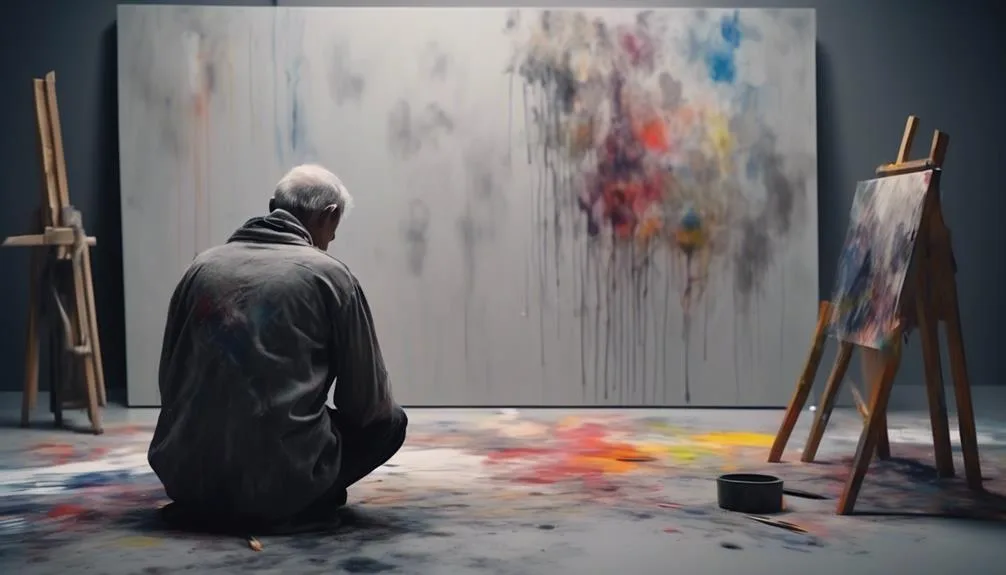
In the realm of artistic depression, symbols serve as silent narrators, telling the story of an inner world often shrouded in shadow and complexity. You'll find that symbolism in abstract art isn't random but a deliberate choice to convey the unspeakable depths of despair.
- Dark hues and muted tones often depict the weight of sadness, showcasing the role of color in artistic expression.
- Broken forms and disjointed figures may represent the fragmentation of self that you feel in depression.
- Empty spaces or voids can symbolize the hollowness and isolation that creeps into your soul.
- Repeated patterns might allude to the cyclical nature of depressive episodes, trapping you in a loop of sorrow.
These elements resonate with your experiences, offering a mirror to your hidden battles and a connection to others who understand.
Iconic Artworks: Nighthawks

As you gaze upon Edward Hopper's 'Nighthawks', you're immediately pulled into a narrative of solitude that mirrors the isolating journey of depression.
The artistic representation in 'Nighthawks' extends beyond the canvas, reflecting the psychological impact of loneliness and disconnection. The figures, so close yet so engrossed in their own worlds, echo a familiar sense of detachment.
The diner's harsh lighting against the dark street serves as a stark metaphor for the contrast between inner turmoil and the outward appearance of normalcy. Hopper's choice of colors and composition doesn't just paint a scene; it evokes an emotional resonance that you might recognize from your own silent battles.
Here, art becomes a shared language for experiences often left unspoken.
The Two Fridas: A Study

Peering into 'The Two Fridas,' Frida Kahlo exposes her divided self, laying bare the profound duality and complex emotions stemming from her depression. You're invited to delve deeper, to see how depression's impact on her life fueled the raw intensity of her paintings. Frida Kahlo's influence in art is undeniable, and through her work, you gain a unique lens into the human condition.
- *The heartrending dichotomy* of physical and emotional pain is palpable in the juxtaposed images.
- *A visceral portrayal of identity*, where the interconnected hearts symbolize an unbreakable yet torturous bond with herself.
- *Visual metaphors of separation and unity* reflect the struggle to reconcile personal and cultural conflicts.
- *An open display of vulnerability*, as the two figures offer their hands, signifying a yearning for connection amidst isolation.
Yayoi Kusama's Immersive Art
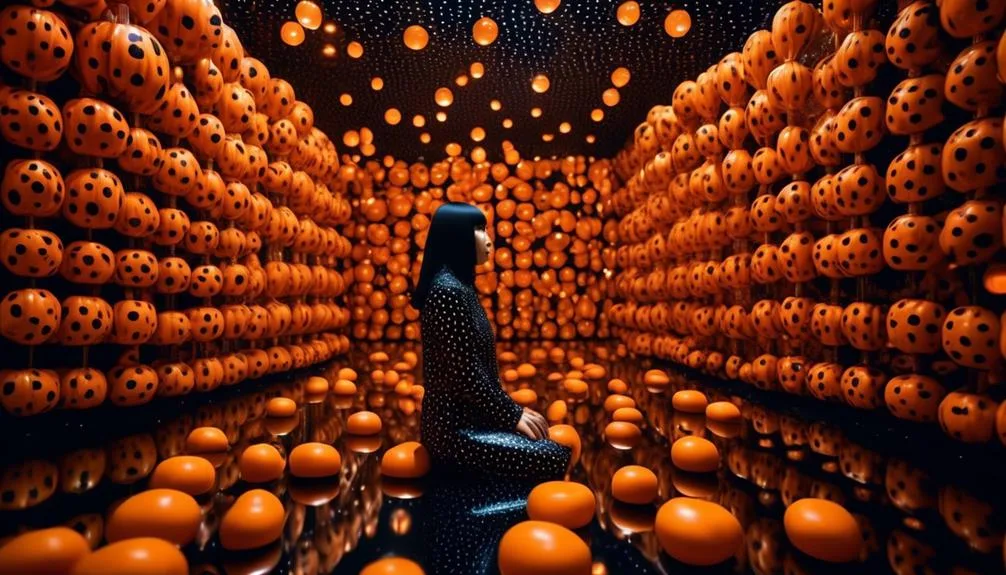
Reflecting on Frida Kahlo's intimate exploration of her inner world, you can find echoes of such personal journeys in Yayoi Kusama's immersive art, where viewers are enveloped in spaces that magnify the complexities of the psyche. Her works, such as the famous 'Infinity Mirror Room,' offer a profound artistic interpretation of mental health, allowing you to step into a realm where the infinite reflects the turmoil and beauty of the mind.
| Aspect | Description | Relevance to Mental Health |
|---|---|---|
| Endless Reflections | Mirrors symbolize the ongoing nature of mental health struggles. | Emphasizes the perpetual cycle of thoughts |
| Polka Dots | Represent Kusama's hallucinations and obsessions. | Symbolic of the invasive nature of certain mental health conditions |
| Lights | The play of light and darkness contrasts hope with despair. | Highlights the fluctuating emotions in depression |
| Color | Vibrant hues battle the monotony of darker shades. | Represents the spectrum of feelings in the human psyche |
Yayoi Kusama's influence on contemporary art is undeniable, making the unseen seen, and providing insight and connection through her bold creations.
Historical Artists and Depression
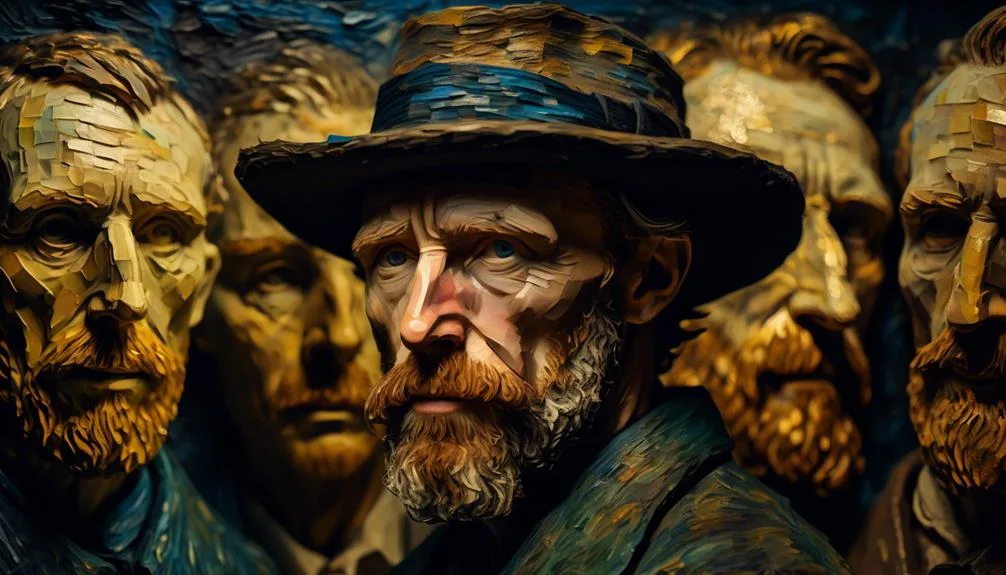
Throughout history, many artists have channeled their battles with depression into masterpieces that offer a profound glimpse into the human condition. You can see, in the brushstrokes and palettes of famous artists, a direct artistic representation of their internal struggles.
- Vincent van Gogh's melancholic swirls in 'Starry Night' reflect his turbulent mental state.
- Edvard Munch's 'The Scream' embodies the existential angst and despair he felt.
- Frida Kahlo's raw, autobiographical paintings vividly depict her emotional and physical pain.
- Mark Rothko's color fields evoke complex emotions, hinting at his inner turmoil.
These works aren't just art; they're visual diaries. They let you peer into the artists' souls, understanding the depth of their depression, and recognizing the universal struggle within us all.
Art Therapy and Healing

Amidst the healing journey, art therapy emerges as a beacon of hope, guiding you to express and transform your innermost feelings of depression into a tangible form of self-discovery and recovery. The canvas becomes your confidant, the colors your voice, and the shapes your emotions. Art therapy benefits are not just anecdotal; they're rooted in the power of therapeutic art techniques to reconcile emotional conflicts, foster self-awareness, and promote personal growth.
| Therapeutic Art Techniques | How They Help |
|---|---|
| Painting | Facilitates emotional expression without words |
| Sculpting | Encourages tactile engagement and presence |
| Collage | Aids in reassembling broken thoughts |
| Photography | Offers a new perspective on self and surroundings |
| Drawing | Supports the externalization of internal struggles |
Frequently Asked Questions
How Does the Public Reception of Art Change When the Artist's Struggle With Depression Is Publicly Known?
You'll notice public perception often shifts when an artist's battle with depression emerges, influenced by celebrity narratives that can deepen empathy and add layers of meaning to their art.
Can Art Created During Periods of Depression Inadvertently Romanticize the Illness?
You might worry your art, born from depression, could unintentionally glamorize suffering. Yet, it's a therapeutic expression, not a beautification, analyzing pain to foster understanding, not to romanticize the struggle.
How Do Art Critics Differentiate Between the Personal Emotional State of the Artist and the Artistic Value of the Work?
You'll find art critics balance critical objectivity with emotional interpretation, carefully separating an artist's personal feelings from the artwork's merits while maintaining empathy for the underlying experiences that shape the piece.
What Role Does the Cultural and Historical Context Play in Interpreting Artworks That Are Associated With Depression?
You're navigating a maze; cultural interpretation and historical influence are the maps that decode an artwork's context, unveiling deeper insights into the artist's battle with depression for a more profound understanding.
How Have Modern Digital Art Forms, Such as Graphic Design and Virtual Reality, Contributed to the Conversation Around Depression and Art?
You'll find that modern digital art forms like graphic design and virtual reality create digital empathy and offer a technological catharsis for those grappling with depression, opening new avenues for understanding and expression.
Conclusion
In the dance of shadow and light, you've seen how despair carves space for creation. Art's embrace turns your silent struggles into a shared vernacular, where pain meets beauty in a poignant waltz.
It's more than catharsis—it's connection. As you reflect on the canvases of sorrow and resilience, remember that each stroke is a step towards understanding, a testament to the human spirit.
You're not alone; through art, every heart finds its echo.


